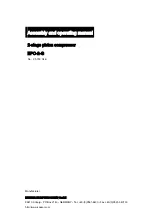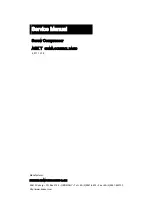
10 / 13
6.3. De-Essing
A special type of saturation problem often encountered in recording is the sibilant (Ssss) sound of the
human voice. The solution is frequency-dependent limiting, which is easily accomplished with the unit.
By inserting an equalizer into the detector patch point and boosting the equalizer at high frequencies
in the vicinity if the sibilant, the limiter’s detector circuit becomes more sensitive to this particular range
of frequencies, and so will limit the bothersome sibilants more than other frequencies.
6.4. Altering instrument texture
Compression can be used to help bring out a lead vocal or instrumental solo in a cluttered mix. The
compressor is also a great corrective tool when working with singers whose own dynamic control is
less than perfect. Experimentation is highly recommended.
6.5. Voice-Over Compression (Ducking)
The unit can be used to reduce music to a background level when an announcer is speaking. The
detector is connected to respond only to an announcer’s voice.
6.6. Stereo operation
On the unit, pressing the stereo tie switch combines the detector outputs so that the loudest channel
controls the limiter action of the other channel. This allows true stereo imaging to be preserved
regardless of which channel is in gain reduction.































